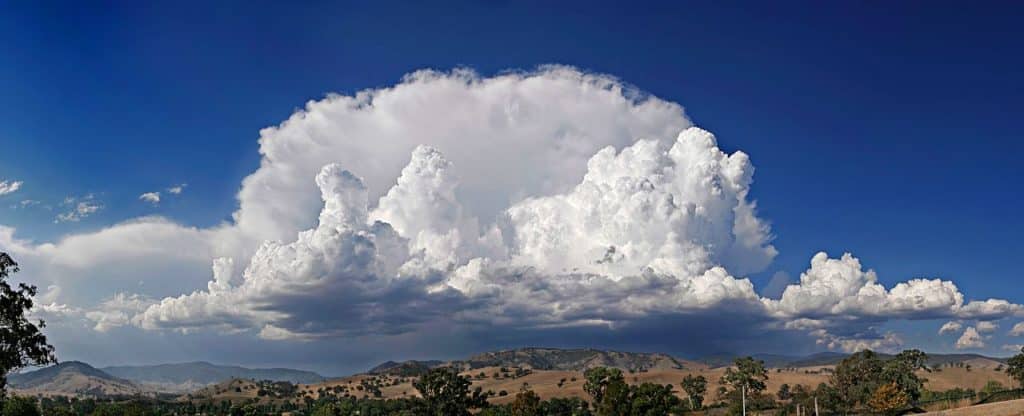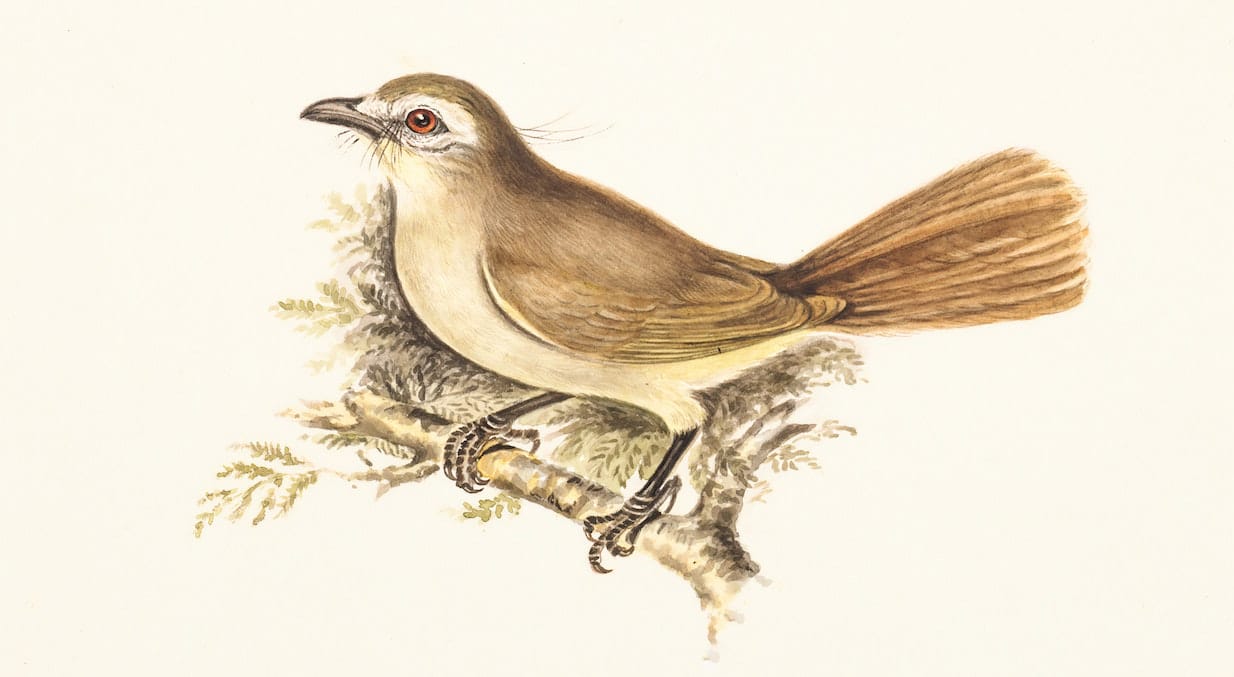Look Up! Cloud Identification and What the Clouds are Telling Us (Part 3)
Outdoor Educator TrainingAs we outlined in earlier parts of this series, our instructors are expected to possess a wealth of experiences, as well as areas of knowledge and skills that educate and keep course participants safe, engaged, and active in the backcountry.
An example of that is learning about cloud formations and their relationship to weather. Just like constellations(see: Look Up: A Guide to Viewing the Upper Half of Our Surroundings and bird identification (see: Look Up and Meet Your Feathered Friends), learning the individual names and characteristics of clouds can be a fascinating and worthwhile enterprise, not to mention informative and highly useful from a risk management perspective.
In this, the third and final installment in our “Look Up” series, we cover how to identify the clouds overhead and what those clouds are telling us. Because learning this skill is yet another way our AEE-accredited outdoor education program scaffolds leadership and learning in the backcountry.
Why clouds are important
Clouds, which help regulate temperature and are needed for precipitation, are invaluable in the water cycle. Identifying and them is important in the backcountry, where a sudden weather change can make or break a hike, climb, or whitewater trip. Teaching course participants how to read the clouds builds confidence, which in turn helps participants make informed decisions based on forecasts for what the day, afternoon, or evening ahead may bring.
Clouds provide a reliable method of predicting the weather in the backcountry. There are three ways to categorize clouds:
- High-level clouds: Cirrocumulus, Cirrus, and Cirrostratus
- Mid-level clouds: Altocumulus, Altostratus, and Nimbostratus
- Low-level clouds: Stratus, Cumulus, Cumulonimbus, and Stratocumulus
High-level Clouds
Cirrocumulus clouds: These clouds appear like ripples on the water surface, and they portent good weather and the likelihood of coming blue skies.
Cirrus clouds: The most common of the high-altitude clouds, these formations have a wispy look with long streamers as a result of being blown by high winds. Cirrus clouds indicate fair weather and by observing their movement, you can determine the direction from which weather and wind are coming.
Cirrostratus clouds: These are thin, sheet-like clouds that tend to cover the entire sky. They are so translucent that you can easily see the sun and moon through them. And when the sun and moon are visible, you may be able to spot a halo formation in the clouds. The halo is caused by light refracting through ice crystals in the clouds. They indicate a warm front approaching.
Mid-level Clouds
Altocumulus clouds: These clouds look like rounded soft clumps, somewhat similar to a flock of sheep in the sky. These formations are frequently seen after a storm. They may also indicate building cloud cover and afternoon storms.
Altostratus clouds: These appear as grey veils over the sun or moon, and if they become darker and thicker, it is likely rain is on the way.

Nimbostratus clouds: These are the low, dark clouds that blanket the sky, leaving little doubt that precipitation is en route and that it may last for hours.
Low-level Clouds
Stratus clouds: Hung low in the sky, status clouds look like enormous grey blankets. If they extend to the ground, they often become fog. These ominous clouds bring rain, and when it’s cold enough they will produce snow.
Cumulus clouds: Among the most beautiful of the cloud formations, the cumulus clouds look like puffy cotton. In addition to their cheerful appearance, they also indicate fair weather. That is, unless they become cumulonimbus clouds, as you’ll see below.
Cumulonimbus clouds: These are tall clouds, dark on the bottom and sometimes featuring a flat “anvil” top. These clouds indicate severe weather on the way, with thunderstorms, torrential rains, possible hail, snow, and even tornadoes.

Stratocumulus clouds: These dark and lumpy clouds show up just in front of, or immediately behind a frontal system. They may provide a brief period of rain or drizzle that most likely will end during the afternoon or early evening.
Here at The National Center for Outdoor & Adventure Education, our backcountry guides and educators travel the globe on an annual basis, which means we have experienced every form of weather imaginable throughout the year. It is crucial that our instructors understand the indicators that inform of oncoming weather. Knowing how to “read the sky” is a must for all outdoor educators, and it is a skill we love to pass on to our course participants.
Look Up! And Meet Your Feathered Friends (Part 2 of 3)
Outdoor Educator TrainingOne of the best parts of an outdoor educator instructor course is when the group of participants comes together — either spontaneously throughout the day, or at the end of a solid day of training — and we all benefit from the unorganized sharing of one’s individual talents and skills.
These experiential-based skill-sharing sessions — which can range from eco-sensitive and safe ways of starting a fire, to hacks for successfully facilitating dialogue among youth participating in a 12-mile trek — bring a helpful spirit to the group. In addition, they enable everyone participating in the course to see the wilderness experience in a different light, with a new set of eyes and appreciation.
Here at The National Center for Outdoor & Adventure Education (NCOAE), we expect our staff to go into the backcountry with a rock-solid set of technical outdoor skills. But it’s also our objective to hire instructors who have developed skills and knowledge that sets them apart from others and deepens the backcountry experience for those they educate and guide.

We talked about instructors who become fluent in the constellations and stars in the first post in this three-part series. Bird identification is another of those teachable skills and is the second of our series’ topics.
Just a walk through a forest as someone points up and tells you the name of the bird perched on a low-hanging branch can be a surprising and eye-opening experience. Learning the identities of the birds in your area can help you connect with the local environment, offering you a teaching skill that can bring a new community of people to enjoy the outdoors and participate in what is essentially a free hobby — birding (aka birdwatching).
Here’s pretty much all you need to get started:
(more…)Look Up! Part 1 — A Guide to Viewing the Upper Half of Our Surroundings
Outdoor Educator TrainingWe’re literally going to be looking upward in the next three posts here on the NCOAE blog, with tips for outdoor educators, wilderness guides, and outdoor recreation enthusiasts alike regarding the terrain overhead. We will be honing our outdoors skills by exploring the wilderness above our heads.
Today’s post (part one in the three-part series) suggests taking a close look at the night sky. And why would we want to do that? Because most of us in the outdoor and experiential education field are adept at tying knots; cooking over a campfire; and naming local rivers, rapids and mountain ranges. But when it comes to the landscape above our heads — the heavens, the clouds, and the winged wildlife — many of us remain slack jawed with wonder.
Imagine an evening in the backcountry with a group of students or adults, some of them seeing bright stars — unhampered by city lights — perhaps for the first time. At this point, you can point upward and say, “That isn’t just a beautiful sky. It’s way more than just that!”
By having everyone lay down, look up, and listen as you point out and describe the individual stars and constellations that your group can now clearly see because they are far from city lights, you’ve opened everyone’s field of vision to the space above our buildings and tree lines that’s often forgotten and/or taken for granted.
With just a little bit of research, you can pick up a wealth of “fun facts” about the night sky. For example, knowing where to find constellations and then sharing the stories that accompany these heavenly connect-the-dot starry clusters makes you even more authoritative and helpful than you already are.
And the stories behind the constellations are beautiful, cultural, and entertaining. Using the embedded video below, watch and listen to Neal deGrasse Tyson, astrophysicist, cosmologist, planetary scientist, author, and science communicator, as he describes the night sky.
The best place to start any chat about the constellations is with the Big Dipper, which is part of Ursa Major (Great Bear). It is comprised of seven stars, with three representing the handle overhead, connected to the remaining four stars to create a big square pot or pan.
(more…)Tips for Participating in EMT Training Online
EMT TrainingYou might have heard that we have packed up and moved the first 14 days of our traditional June, July and August “Intensive” 19-Day EMT-B training courses to an online and at-home format. The reason for this change, of course, is the continuing saga of the coronavirus.
What this modification essentially does is add a mandatory hybrid component to this 19-day training program, with 14 days online, followed by five days on campus for practical and hands-on skills training. Earlier this year, the North Carolina Office of EMS approved our adjusted schedule for five days of on-campus EMT training programs.

Meanwhile, all NCOAE medical training programs taking place outside North Carolina have been put on hold, and the summer sessions on campus in Wilmington, N.C., remain on schedule, but with the hybrid component playing a major part of that training.
Which raises several important questions, including:
- How do we successfully train future emergency medical technicians remotely in this emergency era of digital space?
- How does a potential NCOAE trainee become a great online learner?
Just like everything else connected to COVID-19, this is brand new territory for all of us, and trial-and-error has become the name of the game. That said, we here at NCOAE have come up with some rules and procedures for those in training that, to date, have proven successful. And we will briefly outline those procedures toward the end of this post.
But for now, we’d like to share what we’ve discovered in our effort to make the temporary transition to digital training effective, interesting, and productive. What advice can we offer to those students new to online learning who are participating in our Hybrid 19-Day ‘Intensive’ EMT (EMT-B) training program? Here’s what we learned:
(more…)TALK TO US
Have any further questions about our courses, what you’ll learn, or what else to expect? Contact us, we’re here to help!


